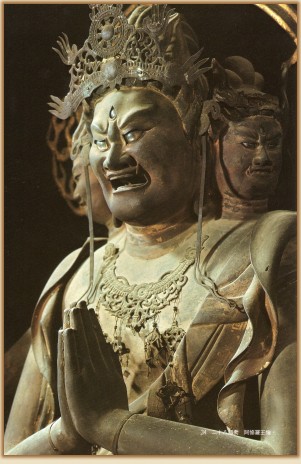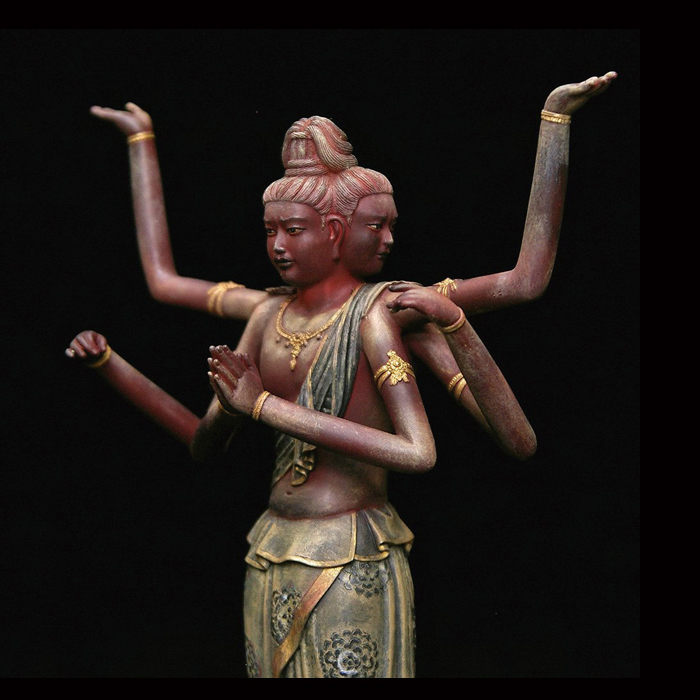Asura (Buddhism)
Asuras are " heavenly " beings. The term Asura is also sometimes translated as " Titans ", " demi-gods " or " Bickering Gods". In Buddhism, the Asuras are among the top three of the six realms of existence (between the people and the Devas ). The characteristic emotion of the Asuras is jealousy. They are often portrayed as warlike beings who Outlying skirmishes with the Devas and lose always. Sometimes the modern world is called Asura area because people are constantly in haste to imitate material goals, but they can not usually reach.
Thailand
In Theravada Buddhism in Thailand, the asuras are seen similar. A detailed description of the kingdom of Asura was first described in the traditional worldview of the Thai Buddhists of Traibhumikatha from the 14th century. Unlike in Mahayana Buddhism - - divided into eleven regions, of which below the human world, the four " suffering solid regions " ( อบายภูมิ - The " world of sensuality " ( Kamaphum - กาม ภูมิ ), one of three worlds, pronunciation: [ p ʰ u ː m ʔàbai ], or ทุคติ ภูมิ - [t ʰ ú ː k ʰ á -t ʰ ì p ʰ u ː m] are, literally, places or times of punishment ). The suffering solid regions, these are the " region of hell beings " ( นรก ภูมิ ), the " region of the Animals" ( เดรัจฉาน ภูมิ ), the spirits "of the Preta region," the hungry ( เปรต ภูมิ - see: Hunger mind) and the "Region the Asura demons " ( อสุรกาย ).
The best known representative of the Asura in Thailand is the demon Rahu, a figure of the Hindu mythology. He drank the immortality elixir Amarit ( Amrita ), was the god Vishnu, then beheaded, and must now for all eternity, the sun and the moon eat ( solar, lunar eclipse ). But since he has no body, immerse the stars after some time again. Rahu is often depicted highly stylized on the gables of religious buildings, he recalls here mostly to a lion's head out of leaves and tendrils.
Further illustrations of Asura can be found on the stone reliefs in many Khmer temples.










